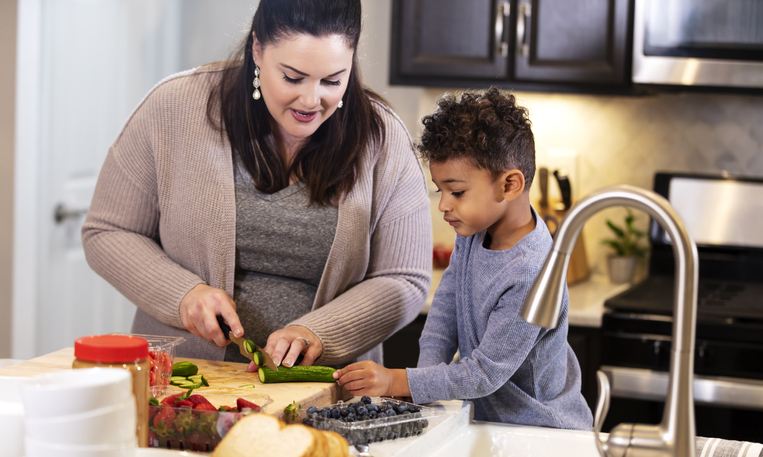COOKING METHODS
Stuck in a rut of cooking a rotation of the same 5-7 dinner meals each week? Planning out your meals each week and preparing your shopping list will help. You can also try different cooking methods here:
Dry Heat Cooking Methods: Baking, Roasting, Broiling, Sauteing, Grilling, and Frying (using plant-based oils). In recipes, these may appear as air-frying, stir-frying, skillet meals, one-pan oven meals, and casseroles.
Moist Heat Cooking Methods: Boiling, Simmering, Poaching, Steaming, and Microwaving. In recipes, these may appear as soups, slow-cooker dinners, boiled dinners, one-pot dinners, or fish plates.
Combo Methods: Stewing and Braising. The best examples here are beef stew and braised short ribs.
Our recipe page can give you more details.
FOOD SAFETY

FDA.gov and CDC.gov recommend four simple steps to protect you and your loved ones from food poisoning:
- Clean
- Separate
- Cook
- Chill.
Washing your food, hands, counters, and kitchen utensils areop at the top of the list. Try to keep raw foods to yourself. Germs can spread from one food to another while in the shopping cart, the refrigerator, or on the counter. There are foods that need to get hot and stay hot. Heat kills germs. Lastly, refrigerate cold foods right away. Milk should go immediately into the refrigerator as soon as you are home from the store or after you have made yourself a bowl of cereal. More details can be found here.

The FoodKeeper App helps you understand food and beverage storage. It will help you maximize the freshness and quality of items. By doing so you will be able to keep items fresh longer than if they were not stored properly. It was developed by the USDA’s Food Safety and Inspection Service, with Cornell University and the Food Marketing Institute. It is also available as a mobile application for Android and Apple devices.
Food Expiration Dates
There is usually one of these three main dates provided on foods that need explaining.
- Expiration and Use By Dates: these refer to food safety. Do not consume food past these dates.
- Sell-By Dates: These are references for retailers to let them know how long to display an item for sale. It is not a safety date.
- Best If Used By Dates: This is a guide to how long a product will retain peak quality and freshness.
You can use food items past the date stamped if there is no evidence of spoilage (odor, mold growth, etc.).
Foodborne Germs and Illnesses
Foodborne illnesses are caused by bacteria, viruses, and parasites. Sometimes toxins (natural growth on fungi, algae, plants, and bacteria-however harmful to humans) and chemicals can be present in contaminated foods. Once contaminated foods are consumed, most bodies cannot tolerate these substances even at small doses. We get sick.
Symptoms of Foodborne Illness
Symptoms consist of:
- Nausea
- Vomiting
- Stomach cramps
- Diarrhea.
*Older adults, young children, people with weaker immune systems, and pregnant women are at the greatest risk for severe reactions. You should seek immediate medical attention for these individuals. Otherwise, food poisoning usually improves without treatment within 48 hours. During this period, stay near a bathroom and drink plenty of fluids (water, broth, and electrolyte drinks). Electrolytes are minerals, such as sodium and potassium, that help regulate your heartbeat and control your body’s water levels. Another tip is to try ice chips if drinking is uncomfortable. Once your feel ready to eat, start with toast, rice, or crackers. Avoid dairy, caffeine, alcohol, carbonated drinks, and spicy/fatty foods. They will make you feel worse.

